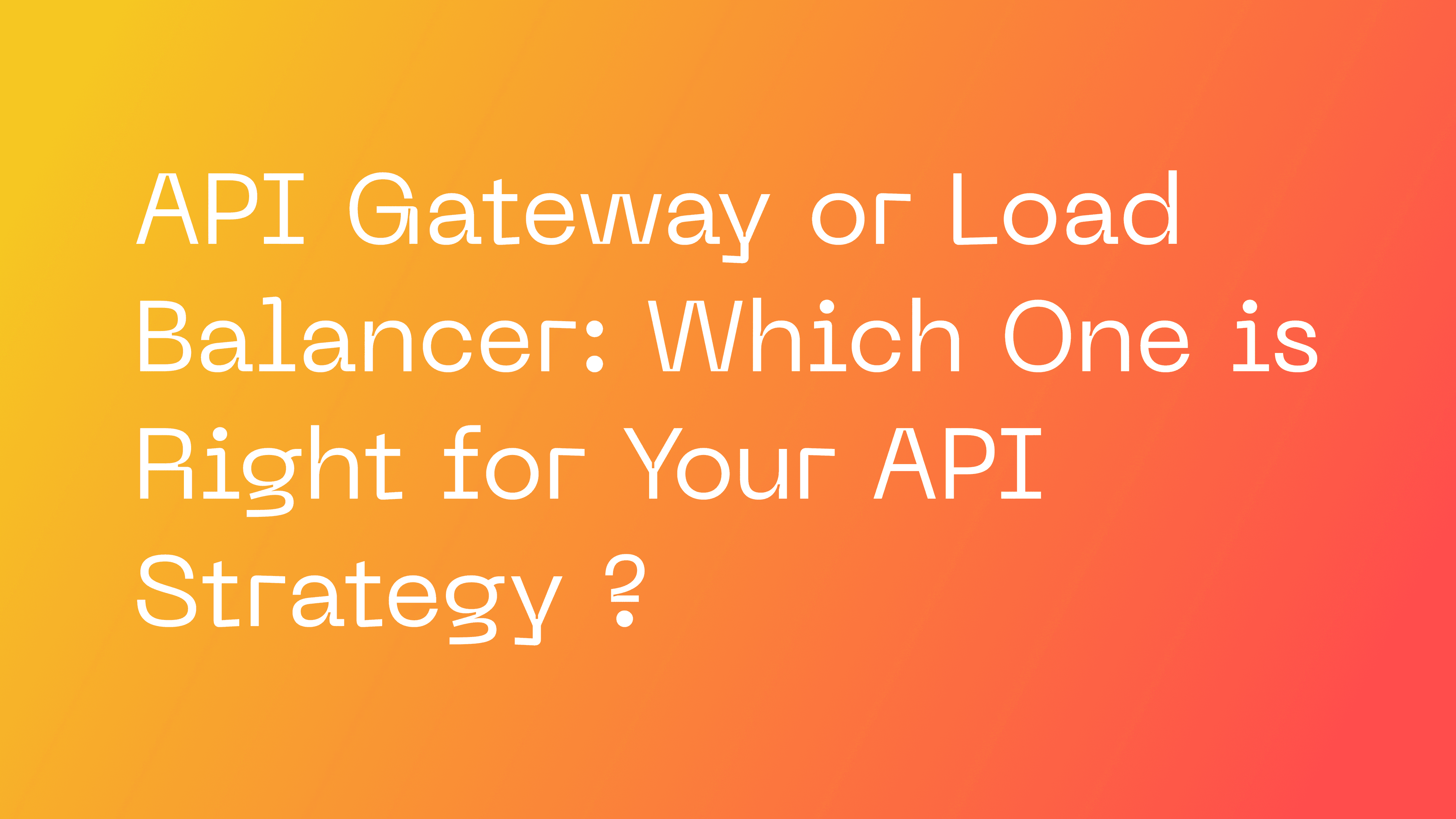API Gateway or Load Balancer: Which One is Right for Your API Strategy?.
April 18, 2023
APIs have become a vital part of modern software development, enabling seamless integration and communication between different applications and services. As the demand for high-performing and reliable APIs grows, it's important to understand the tools that help manage and optimize them. Two such tools are API gateways and load balancers, which can sometimes be confused due to their overlapping functionalities. In this blog, we'll dive deep into what API gateways and load balancers are, why they're sometimes confused, and most importantly, how to choose the right one for your specific use case.
Understanding API Gateways
An API gateway is a server that acts as an intermediary between clients and backend services, providing a single entry point for API requests. API gateways serve several essential functions, such as authentication, authorization, rate limiting, and request/response transformation. By consolidating these functions into a single component, API gateways help streamline the management of APIs and ensure consistent behavior across all services.
Getting to Know Load Balancers
A load balancer is a networking device or software that distributes incoming network traffic across multiple servers to ensure that no single server is overwhelmed. This distribution helps maintain optimal performance and availability of applications and services by mitigating the risk of server failures and ensuring requests are evenly distributed. Load balancers can operate at various layers of the OSI model, with Layer 4 (transport layer) and Layer 7 (application layer) being the most common.
Why the Confusion?
The confusion between API gateways and load balancers often arises from the fact that both can act as reverse proxies, directing client requests to appropriate backend services. Moreover, some API gateways incorporate basic load balancing functionalities, while some load balancers offer API-specific features like routing and request/response transformation. Despite these similarities, API gateways and load balancers serve distinct purposes and offer unique benefits, which we'll explore in the next section.
Choosing the Right Solution
When deciding between an API gateway and a load balancer, it's crucial to consider the specific needs of your application or service. Here are some scenarios to help guide your decision:
-
If your primary concern is managing and securing API traffic, an API gateway is the ideal choice. Its features, such as authentication, authorization, and rate limiting, are specifically designed to handle API requests and protect your backend services.
-
If you need to distribute network traffic to maintain high availability and performance for your application, a load balancer is the way to go. Load balancers are built to optimize resource usage and prevent server overloads, ensuring a smooth user experience.
-
In some cases, you may need both an API gateway and a load balancer. For example, if you have a microservices architecture with multiple APIs and need to manage traffic distribution and API security, it's worth considering a combination of the two.
Conclusion
API gateways and load balancers are essential tools for optimizing and securing API traffic. While they share some functionalities, they serve distinct purposes and offer unique benefits. By understanding the specific needs of your application or service, you can make an informed decision about which solution is best for your use case. Remember that in some scenarios, a combination of both might be the most effective solution to ensure the seamless performance and security of your APIs.

